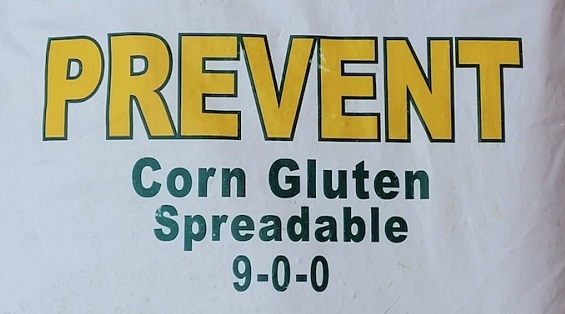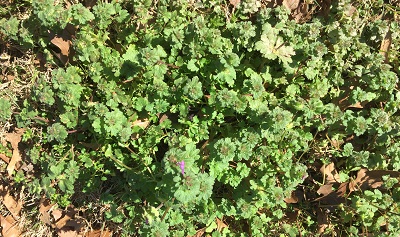Lawn Watering in Central Texas
Understanding the water needs of our lawns will ensure greater success with maintaining a healthy lawn. A lawn that is properly watered can compete aggressively with weeds and avoid stress that contributes to lawn diseases.
LAWNS: Creating a deep root system is probably the single-most important goal during hot weather. Lawns should be watered to a depth of 6 inches during each irrigation. To calculate the length of time to run irrigation, collect several empty tuna fish cans or cat food cans and set them randomly around the yard. Run the irrigation for the length of time you are used to running it. Check the amounts of water collected in the cans and calculate the average amount. Next, dig down in the soil to see to what depth the water reached. Now you can calculate any adjustment that might be needed in water time. Let’s say you collected an average of ½ inch of water in the cans in a 15 minute time period, and the water penetrated the soil to a depth of 3 inches. You can now calculate that it would take approximately 30 minutes, or 1 inch of water to penetrate to a depth of 6 inches. Sloped yards may need this amount applied in two time periods, an hour or so apart, in order to slow down run-off on the slope. Soil depth and type plays a roll in water percolation rate.
Determining frequency of watering is the next step in maintaining a healthy lawn. It is important to water thoroughly, as described above, and not water again until the lawn is approaching the stress point. This stress point is seen in St. Augustine grass as the leaves “folding”, and in Bermuda and Zoysia grasses as when a footprint does not “bounce” back. This is the point at which irrigation should be timed. Spending a week or two observing your lawn and setting your irrigation accordingly will ensure a more drought-tolerant lawn. Your lawn will be better able to withstand the stress of water rationing, and your water bills will reflect this “water-wise” approach to irrigation. During a “drought year”, water periodically during the winter- grass roots are still alive and require moisture.
Remember to raise the mower height in the heat of the summer. The leaves will shade the soil and conserve moisture. Try not to remove more than 1/3 of the leaf blade each mowing. Water in the morning (daylight) so leaves will dry quickly and be less prone to disease. This is especially important in the spring and fall when temperatures are cool and brown patch fungus is prevalent.
Last, but not least, try to observe your irrigation system while it is running—the reason for that brown grass may become obvious!
SEEDING: Warm season lawn grasses such as Common Bermuda and Buffalo Grass should be seeded from approx. April 15 thru Sept. 15. Soil temperature must be warm enough for the seed to germinate in the spring, and the lawn should have time to establish before cold weather in the fall. Seeding cool season lawn grass such as Tall Fescue (for the shade) may take place in the spring and fall, when cool temperatures allow for germination. Overseeding with Annual or Perennial Ryegrass in the winter is NOT recommended due to unhealthy competition with the warm season grasses in the spring.
SUGGESSTED LAWN MAINTENANCE SCHEDULE FOR CENTRAL TEXAS
FEBRUARY: Apply pre-emergent herbicide to prevent warm season weed seeds from germinating. (spotted spurge, dichondra, sandburs, dallisgrass crabgrass, goosegrass, etc. NOTE: This is NOT the time to fertilize!
FEB./MARCH: Apply selective post-emergent herbicide to kill existing weeds in lawns while the lawns are still dormant. Have weeds identified for best recommendations. Use pump-type sprayer and be careful of drift-choose a day to spray when the air is still. Label sprayer “HERBICIDE ONLY”.
NOTE: This is NOT the time to fertilize!
APRIL: Apply fertilizer to lawns after the second or third mowing (of the Lawn, not the weeds!) A soil test every three years or so is recommended. Most lawns are most limited in Nitrogen, as it is not “bound” by clay particles in the soil. Organic forms of nitrogen are “water insoluble”. Organic nitrogen requires microorganisms in the soil to break it down to a usable form for plants, and is not subject to leaching. Avoid high nitrogen fertilizers as they may contribute to disease problems such as take-all patch.
DO NOT APPLY POST-EMERGENT WEED AND FEED PRODUCTS TO YOUR LAWN. THEY ARE BROADLEAF WEED KILLERS AND CAN HARM THE TREE AND SHRUB ROOTS GROWING IN YOUR LAWN. REMEMBER, TREE ROOTS CAN GROW 1-1 1/2 TIMES THE HEIGHT OF THE TREE OUT FROM THE TRUNK! THIS MEANS THAT EVEN YOUR NEIGHBOR’S YARD MAY CONTAIN ROOTS FROM YOUR TREES!
SEPT./OCT: Apply fertilizer to lawns to aid in root health for the winter. Base analysis on soil tests performed every few years. Most lawns in Austin have more than enough phosphorus and potassium. Some lawns tested have even shown toxic levels of phosphorus! Don’t assume anything-get it tested! Organic forms of Nitrogen are better to use in drought conditions, as it provides a slow release of nitrogen.
OCTOBER: Apply pre-emergent herbicide to prevent cool season weed seeds from germinating. (annual bluegrass, dandelion, henbit, common chickweed, thistles, etc.) Chemical pre-emergents such as the product “Amaze”, or organic products such as Corn Gluten may be used.



